-
 Bitcoin
Bitcoin $114500
-0.31% -
 Ethereum
Ethereum $3648
1.11% -
 XRP
XRP $3.033
-0.27% -
 Tether USDt
Tether USDt $0.9999
-0.01% -
 BNB
BNB $758.5
-0.32% -
 Solana
Solana $167.5
1.48% -
 USDC
USDC $0.9998
-0.02% -
 TRON
TRON $0.3331
0.74% -
 Dogecoin
Dogecoin $0.2039
0.25% -
 Cardano
Cardano $0.7419
-0.46% -
 Hyperliquid
Hyperliquid $39.21
2.66% -
 Stellar
Stellar $0.4049
-1.95% -
 Sui
Sui $3.483
-0.56% -
 Bitcoin Cash
Bitcoin Cash $570.8
2.89% -
 Chainlink
Chainlink $16.67
-0.57% -
 Hedera
Hedera $0.2470
-1.57% -
 Ethena USDe
Ethena USDe $1.001
0.00% -
 Avalanche
Avalanche $22.36
1.52% -
 Litecoin
Litecoin $123.4
4.35% -
 UNUS SED LEO
UNUS SED LEO $8.989
0.09% -
 Toncoin
Toncoin $3.324
-2.40% -
 Shiba Inu
Shiba Inu $0.00001219
-1.30% -
 Uniswap
Uniswap $9.811
2.54% -
 Polkadot
Polkadot $3.662
-0.07% -
 Monero
Monero $295.5
-3.85% -
 Dai
Dai $1.000
0.01% -
 Bitget Token
Bitget Token $4.345
0.24% -
 Cronos
Cronos $0.1380
0.95% -
 Pepe
Pepe $0.00001044
-1.14% -
 Ethena
Ethena $0.5981
-4.24%
How does DeFi mining use smart contracts to allocate rewards?
Smart contracts automate DeFi mining reward distribution, ensuring transparency and fairness by tracking contributions and calculating rewards based on predefined algorithms.
Mar 28, 2025 at 08:42 am
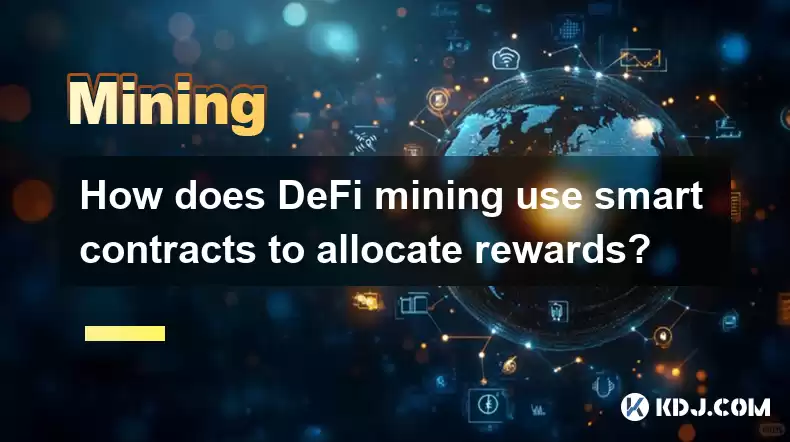
The Role of Smart Contracts in DeFi Mining Reward Allocation
Decentralized Finance (DeFi) mining, unlike traditional mining which relies on solving complex mathematical problems, leverages smart contracts to automate reward distribution. These self-executing contracts, written in code and residing on a blockchain, govern the entire process, ensuring transparency and eliminating the need for intermediaries. This significantly differs from centralized systems where a single entity controls reward allocation.
Smart contracts in DeFi mining handle several crucial aspects of reward distribution. First, they define the rules for earning rewards. This includes specifying the required actions, like providing liquidity to a decentralized exchange (DEX) or staking tokens in a lending protocol. The contracts then automatically track these actions, verifying participation and calculating earned rewards based on predefined algorithms.
The allocation mechanism itself is usually embedded within the smart contract's code. This could involve a simple proportional distribution based on the amount of contribution, a tiered system offering higher rewards for larger contributions, or more complex models incorporating factors like time locked assets or network activity. These algorithms are publicly auditable, promoting trust and transparency.
Understanding the Mechanisms of Reward Allocation
Smart contracts use several key mechanisms to ensure fair and efficient reward allocation in DeFi mining. One common method is the use of tokenomics. This refers to the economic model governing the token's supply, distribution, and usage. The smart contract meticulously tracks token balances, ensuring rewards are accurately calculated and distributed according to the established tokenomics.
Another crucial mechanism is the use of oracles. These external data feeds provide real-time information to the smart contract, such as the current price of an asset or the total amount of liquidity in a pool. This data is essential for calculating rewards accurately, especially in scenarios involving multiple assets or dynamic reward structures.
Furthermore, many DeFi mining platforms use time-based reward models. These models reward users based on how long they participate. Smart contracts track the duration of participation, ensuring users are rewarded proportionally to their commitment. This incentivizes long-term engagement and stability within the DeFi ecosystem.
A Step-by-Step Look at Reward Allocation
Let's consider a simplified example of a liquidity providing DeFi mining scenario:
- Step 1: Providing Liquidity: A user deposits tokens into a liquidity pool on a decentralized exchange (DEX) governed by a smart contract.
- Step 2: Transaction Monitoring: The smart contract continuously monitors the liquidity pool, tracking the user's contribution.
- Step 3: Reward Calculation: Based on the predefined algorithm (e.g., proportional to the user's share of the pool), the smart contract calculates the user's earned rewards.
- Step 4: Reward Distribution: Once a specific period elapses (e.g., daily or weekly), the smart contract automatically distributes the calculated rewards to the user's wallet.
- Step 5: Transparency and Auditability: The entire process is recorded on the blockchain, making it transparent and auditable by anyone.
This process ensures that rewards are automatically distributed fairly and efficiently, without the need for manual intervention or centralized control.
Variations in Reward Allocation Strategies
The specific methods employed for reward allocation can vary significantly across different DeFi platforms. Some might utilize a linear reward distribution, where rewards decrease linearly over time. Others might employ a tiered system offering escalating rewards based on the amount of capital contributed. Some even incorporate referral programs, rewarding users for attracting new participants.
The complexity of these reward models is directly reflected in the sophistication of the underlying smart contracts. More complex models require more intricate code, demanding rigorous auditing to ensure security and accuracy. The choice of allocation strategy heavily influences user participation and the overall success of the DeFi mining project.
The smart contract is also responsible for managing the overall supply of rewards. It determines the total amount of rewards to be distributed and the rate at which they are released. This careful management is crucial to maintaining the long-term sustainability of the DeFi project and preventing inflation.
The use of smart contracts in DeFi mining offers a significant advantage over traditional, centralized systems. It provides a transparent, secure, and automated mechanism for allocating rewards, fostering trust and participation in the decentralized ecosystem. This inherent transparency allows users to independently verify the fairness and accuracy of the reward distribution process.
Frequently Asked Questions
Q: What are the risks associated with DeFi mining using smart contracts?
A: Smart contract vulnerabilities are a major risk. Bugs in the code could lead to unforeseen reward distributions or even the loss of funds. Thorough audits are crucial to mitigate this risk. Additionally, the volatility of cryptocurrency markets can impact the value of earned rewards.
Q: How can I ensure the smart contract allocating rewards is secure?
A: Look for platforms that have undergone rigorous security audits by reputable firms. Examine the smart contract code yourself (if you have the technical expertise) or rely on community reviews and discussions to assess its security.
Q: Are all DeFi mining rewards distributed equally?
A: No, reward allocation methods vary widely. Some platforms distribute rewards proportionally to contributions, while others use tiered systems or incorporate time-based incentives. Always carefully review the specific reward mechanism of a platform before participating.
Q: What happens if a smart contract encounters an error during reward allocation?
A: The outcome depends on the specific error and the contract's design. Some contracts might halt operations until the error is fixed, while others might have fallback mechanisms in place. Transparency and clear communication from the platform are key in such situations.
Q: Can I participate in DeFi mining without understanding smart contracts?
A: While you don't need to understand the code itself, it's crucial to understand the platform's reward mechanism and associated risks. Researching the platform and its security measures is essential before participation.
Disclaimer:info@kdj.com
The information provided is not trading advice. kdj.com does not assume any responsibility for any investments made based on the information provided in this article. Cryptocurrencies are highly volatile and it is highly recommended that you invest with caution after thorough research!
If you believe that the content used on this website infringes your copyright, please contact us immediately (info@kdj.com) and we will delete it promptly.
- XRP, DOGE, and the Altcoin Darling Dilemma: Where's the Alpha?
- 2025-08-06 08:30:11
- Beatrix Potter 50p Coins on eBay: A Collector's Guide to Value and Rarity
- 2025-08-06 08:50:12
- Dogecoin Price Outlook 2025: Barking Up the Right Tree?
- 2025-08-06 08:35:17
- Floki Price Super Cycle Watch: Key Support Holds, Will the Viking Dog Fly?
- 2025-08-06 08:50:12
- Executive Order vs. Financial Institutions: Is Political Bias the New Normal?
- 2025-08-06 08:55:11
- China, DeepSeek AI, and Crypto Prices: Decoding the Future of XRP, SHIB, and PEPE
- 2025-08-06 09:00:13
Related knowledge
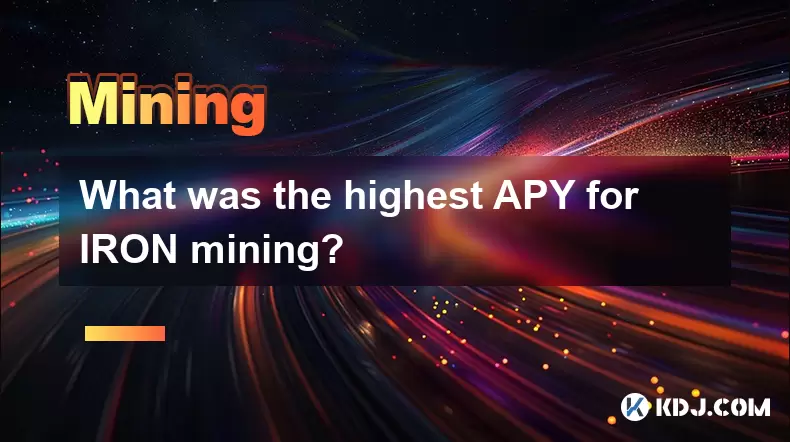
What was the highest APY for IRON mining?
Jul 23,2025 at 05:14am
Understanding IRON Token and Its Mining MechanismThe IRON token is a stablecoin that operates within the Iron Finance ecosystem, primarily on blockcha...

What is impermanent loss in IRON pools?
Jul 23,2025 at 09:00am
Understanding Impermanent Loss in the Context of IRON PoolsImpermanent loss is a phenomenon that affects liquidity providers in decentralized finance ...
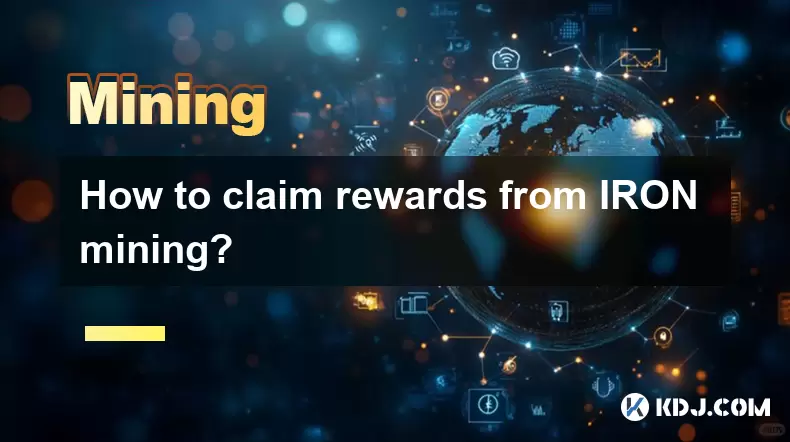
How to claim rewards from IRON mining?
Jul 23,2025 at 02:21pm
Understanding IRON Mining and Reward MechanismsIRON Finance operated as a decentralized finance (DeFi) protocol on the Polygon and Binance Smart Chain...
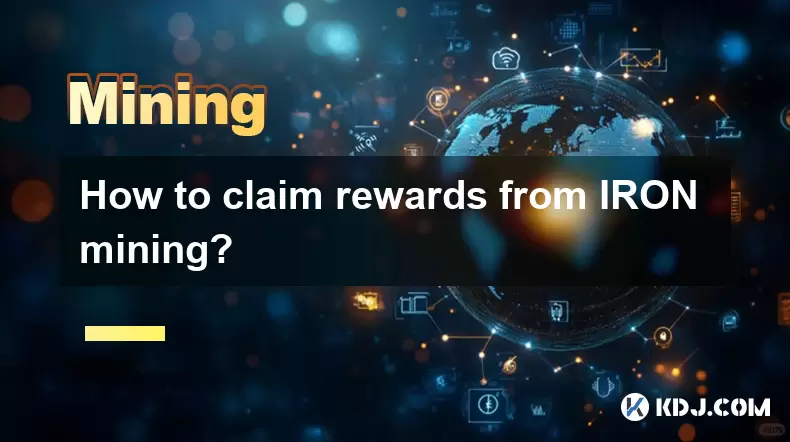
How to claim rewards from IRON mining?
Jul 29,2025 at 05:07am
Understanding IRON Mining and Reward MechanismIRON is a dual-token system designed to stabilize the value of a synthetic asset through a combination o...
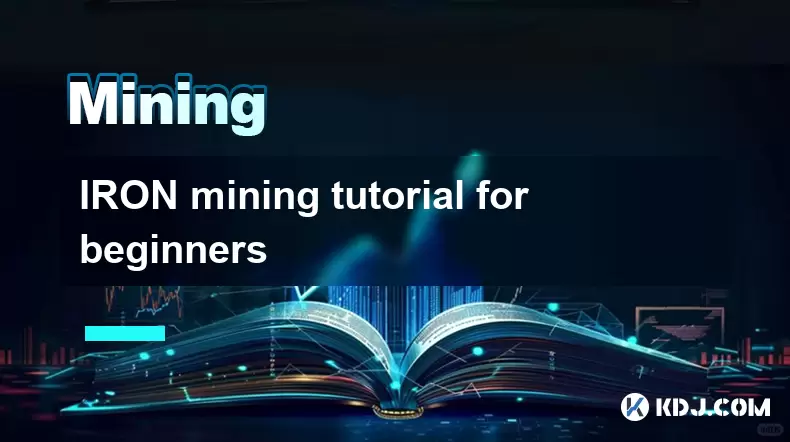
IRON mining tutorial for beginners
Jul 27,2025 at 12:01am
What Is IRON and How Does It Work in the Cryptocurrency Ecosystem?IRON is a cryptocurrency token that operates on the Binance Smart Chain (BSC) and is...
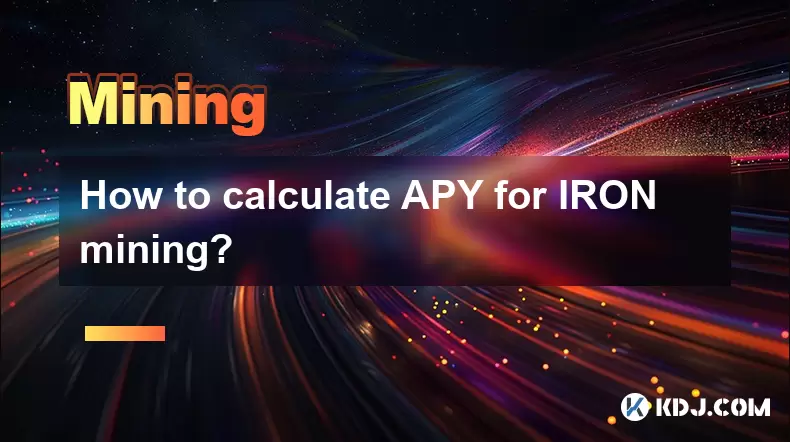
How to calculate APY for IRON mining?
Jul 28,2025 at 09:49am
Understanding APY in the Context of IRON Token MiningWhen engaging in IRON token mining within decentralized finance (DeFi) platforms, Annual Percenta...

What was the highest APY for IRON mining?
Jul 23,2025 at 05:14am
Understanding IRON Token and Its Mining MechanismThe IRON token is a stablecoin that operates within the Iron Finance ecosystem, primarily on blockcha...

What is impermanent loss in IRON pools?
Jul 23,2025 at 09:00am
Understanding Impermanent Loss in the Context of IRON PoolsImpermanent loss is a phenomenon that affects liquidity providers in decentralized finance ...

How to claim rewards from IRON mining?
Jul 23,2025 at 02:21pm
Understanding IRON Mining and Reward MechanismsIRON Finance operated as a decentralized finance (DeFi) protocol on the Polygon and Binance Smart Chain...

How to claim rewards from IRON mining?
Jul 29,2025 at 05:07am
Understanding IRON Mining and Reward MechanismIRON is a dual-token system designed to stabilize the value of a synthetic asset through a combination o...

IRON mining tutorial for beginners
Jul 27,2025 at 12:01am
What Is IRON and How Does It Work in the Cryptocurrency Ecosystem?IRON is a cryptocurrency token that operates on the Binance Smart Chain (BSC) and is...

How to calculate APY for IRON mining?
Jul 28,2025 at 09:49am
Understanding APY in the Context of IRON Token MiningWhen engaging in IRON token mining within decentralized finance (DeFi) platforms, Annual Percenta...
See all articles

























































































